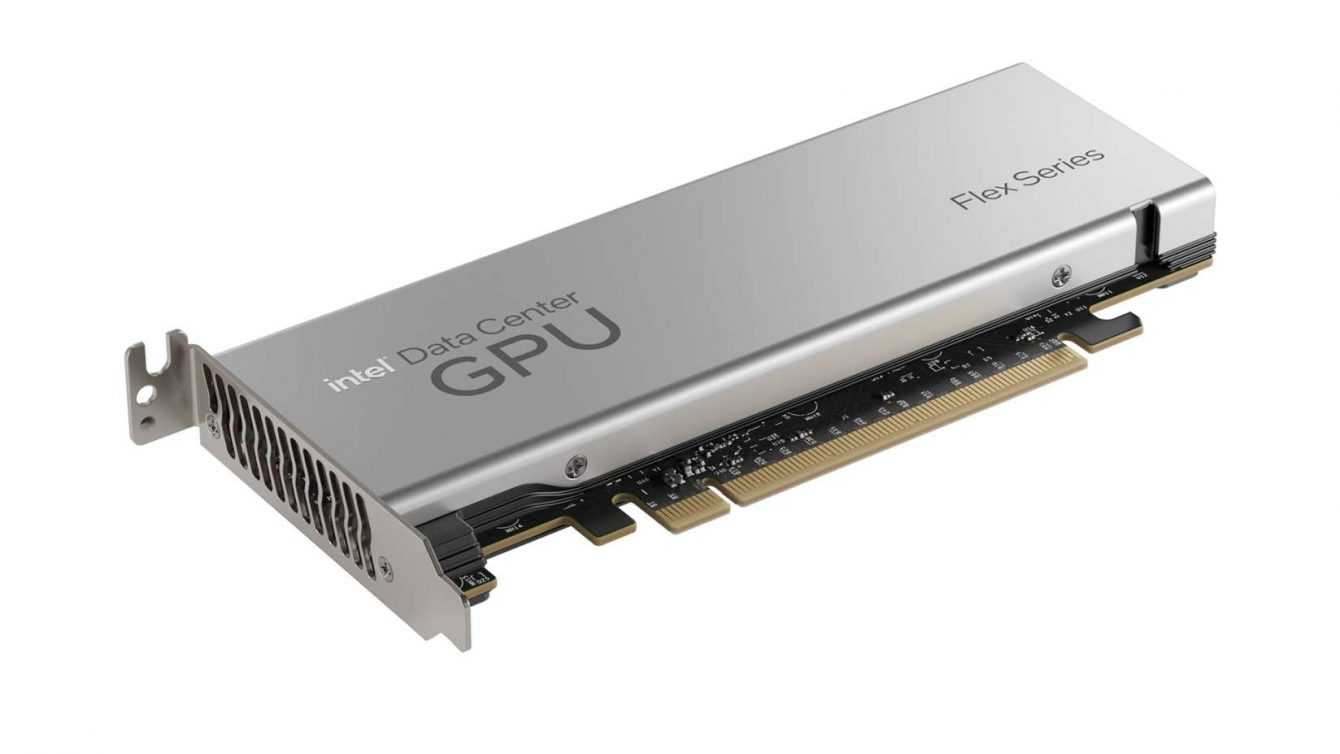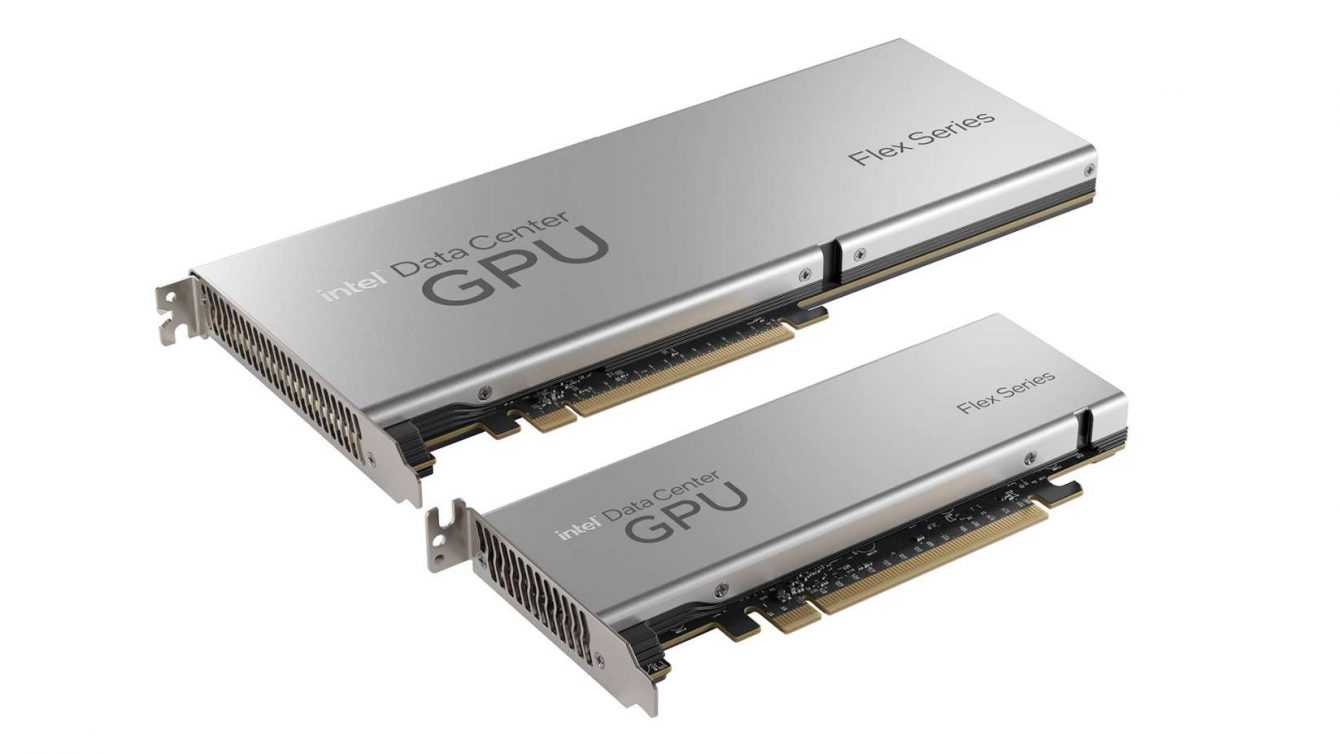
Intel unveiled its new Flex Series Data Center GPUs that enable the Intelligent Visual Cloud
With up to 5x better average transcoding throughput and up to 68 simultaneous cloud gaming streams. There GPU Flex Series is designed to meet the workload requirements of theIntelligent Visual Cloud
Details of Intel’s new Flex Series GPU
The Intel Flex Series Data Center GPU (previously known by the codename Arctic Sound-M) helps operators to free themselves from the constraints imposed by proprietary environments and those compartmentalized in silos. Thus reducing the need for data centers to use separate and dedicated solutions. Intel offers users aunique graphic processing solution (GPU) designed to flexibly handle a wide range of workloads without compromising performance or quality.
It also helps reduce and optimize operating costs (TCO) for cloud workloads. Among them, we have multimedia content distribution, cloud gaming, artificial intelligence, metaverse and other use cases emerging in the visual cloud.

Statements regarding Intel’s new Flex Series GPU
Below are the first statements regarding the new Flex Series GPU.
We are in the midst of explosive pixel growth driven by a growing number of consumers and applications, as well as higher resolutions. Today’s data center infrastructure is under great pressure to process, encode, decode, move, store and display visual information. The Intel Flex Series GPU is a revolutionary design that uniquely responds to today’s demand for computing power by providing flexibility and scalability for the immersive experiences of tomorrow.
Jeff McVeighIntel vice president e general manager, Super Compute Group
Features
The GPU Flex Series meet the requirements for quality, density and latency. With the industry’s first hardware-based AV1 encoder plugged into a data center GPU, the Flex Series GPU offers transcoding throughput of the media five times more performing. In addition to a decoding throughput twice as powerful half the power required by other manufacturers’ solutions.
It also offers a bandwidth improvement of over 30% with significant savings on operating costs (TCO). Plus extensive support for the latest multimedia tools, APIs, frameworks, and codecs. Based onIntel’s X and HPG architecture and supported by a broad ecosystem of hardware vendors and software developers. These GPUs offer between CPU and GPU a flexible transition of workloads of artificial intelligence inference; from multimedia analytics to smart cities and medical imaging, without binding the developers the use of proprietary software.

Because it’s important
Media processing and distribution, AI visual inference, cloud gaming and desktop virtualization are taking up more and more space in data center. As a result, the Visual Cloud data center GPU market segment is projected to reach $ 15 billion by 2026. This rapid increase affects an industry largely dependent on proprietary and licensed coding models, such as example CUDA for GPU programming. Lo solution stack Flex Series GPU overcomes these limitations while delivering significant benefits compared to alternative solutions, improving flexibility, scalability and energy consumption.
It also features a Lower TCO for solution providers thanks to the fact that it supports a greater number of subscribers to the service with fewer servers. The software stack is enabled by oneAPI, the productive path to accelerated processing, freeing developers from the economic and technical burdens of proprietary programming models. It is an open alternative to proprietary language lock-in and makes all hardware performance available with a comprehensive and proven set of tools that complement existing languages and parallel models. This allows users to develop open, transportable code that will take full advantage of various combinations of CPU e GPU Intel.
The performance
Initially, the data center GPU Intel Flex Series offers media processing and distribution and cloud gaming capabilities on Android. Media processing and distributionVideo processing requirements for video conferencing, streaming and social media have transformed data centers. The multimedia architecture of the Flex Series GPU, based on up to four Xs and Media Engine, accommodates the higher flow density demands of the modern data center without compromising on quality.
- It delivers five times more media transcoding throughput and two times more powerful decoding throughput at half the power (GPU Intel Flex Series 140 rispetto a NVIDIA A10).
- Provides up to 36 1080p60 streams transcoding throughput per card.
- Offers transcoding throughput of eight 4K60 streams per card.
- When scaled to 10 cards in a 4U server configuration, it can support up to 360 HEVC-HEVC 1080p60 throughput transcoding streams.
- The hardware-based open source AV1 bandwidth encoder of the Flex Series GPU delivers savings of over 30%. The Flex Series GPU’s media engine also supports and improves performance for a wide range of industry CODECs, including HEVC, AVC, and VP9.
- By taking advantage of the function Intel Deep Link Hyper Encodethe GPU Intel Data Center serie Flex 140 with two devices on a single card it can meet the industry requirement of one second delay while providing real-time 8K60 transcoding. This capability is available for AV1 and HEVC HDR formats.
Cloud gaming su Android
The explosive growth of the cloud gaming created the need for more flexible solutions that maximize concurrent game flows for users. The Flex Series GPU is designed for high quality gaming, delivering an unprecedented gaming experience across multiple devices. It is validated on nearly 90 of the most popular game titles Android di Google Play.
- A single Flex Series 170 GPU can reach up to 68 720p30 streamswhile a single Flex Series 140 GPU can achieve up to 46 stream 720p30 (measured on selected game titles).
- When sized with six Flex Series 140 GPU cards, it can reach up to a 216 stream 720p30.

Stack open software
Developers can access one stack software completo which combines open source components and tools. All of this in order to effectively realize Flex Series GPU capabilities for visual cloud workloads, including support for oneAPI and OpenVINO. Intel’s oneAPI tools enable developers to deliver accelerated applications and services, including Intel oneAPI Video Processing Library (oneVPL), Intel VTune Profiler and other.
Availability
Systems equipped with Flex Series GPUs will be available from global suppliers such as Dell Technologies, HPE, H3C, Inspur, Lenovo and Supermicro. Other solutions with the Flex Series GPU will be available in the coming months, starting with multimedia content distribution and Android cloud gaming workloads. These will be followed by Windows cloud gaming, AI, and VDI 10 workloads.
More statements regarding Intel’s new Flex Series GPUs
Vikas Ratnasenior director, product management, Cisco, stated that:
Cisco and Intel have a long history of technology collaboration in delivering innovation for the Cisco Unified Computing System (UCS) and the Cisco HyperFlex hyperconverged infrastructure. We are excited to continue our partnership to provide customers with accelerated computing capabilities for a wide range of modern workloads through an open and flexible architecture comprised of Cisco Intersight, UCS X-Fabric technology and the new Intel Data Center GPU Flex. Series.
Rajesh Pohanivice president, PowerEdge, HPC, and Core Compute, Dell Technologies, said:
Dell is partnering with Intel to develop breakthrough technologies and innovations, taking the market to new heights with the Intel Data Center GPU Flex Series accelerator family in Dell PowerEdge servers. Together we will enable users to improve their GPU-parameterized media analytics, inference, and VDI results.
In the end. Scott Teasevice president and general manager of HPC and AI, Lenovo, said that:
Lenovo wants to enable customers to more easily implement and leverage artificial intelligence. Intel Data Center GPU Flex Series delivers performance benefits on the most demanding workloads, ranging from graphics, gaming, and even AI inference. With the addition of the Flex Series GPUs, along with OneAPI, Intel offers the most complete range of processing on a scalable and open platform. Partnering with Intel on Computing Architecture Expansion helps us better serve customers on their AI journey.
And you? What do you think of these new ones GPU Flex Series di Intel ? Let us know with a comment and stay tuned to TechGameWorld.com for more news and reviews from the world of technology (and more!).
The Intel article presents its new Flex Series GPUs comes from TechGameWorld.com.
















Leave a Reply
View Comments